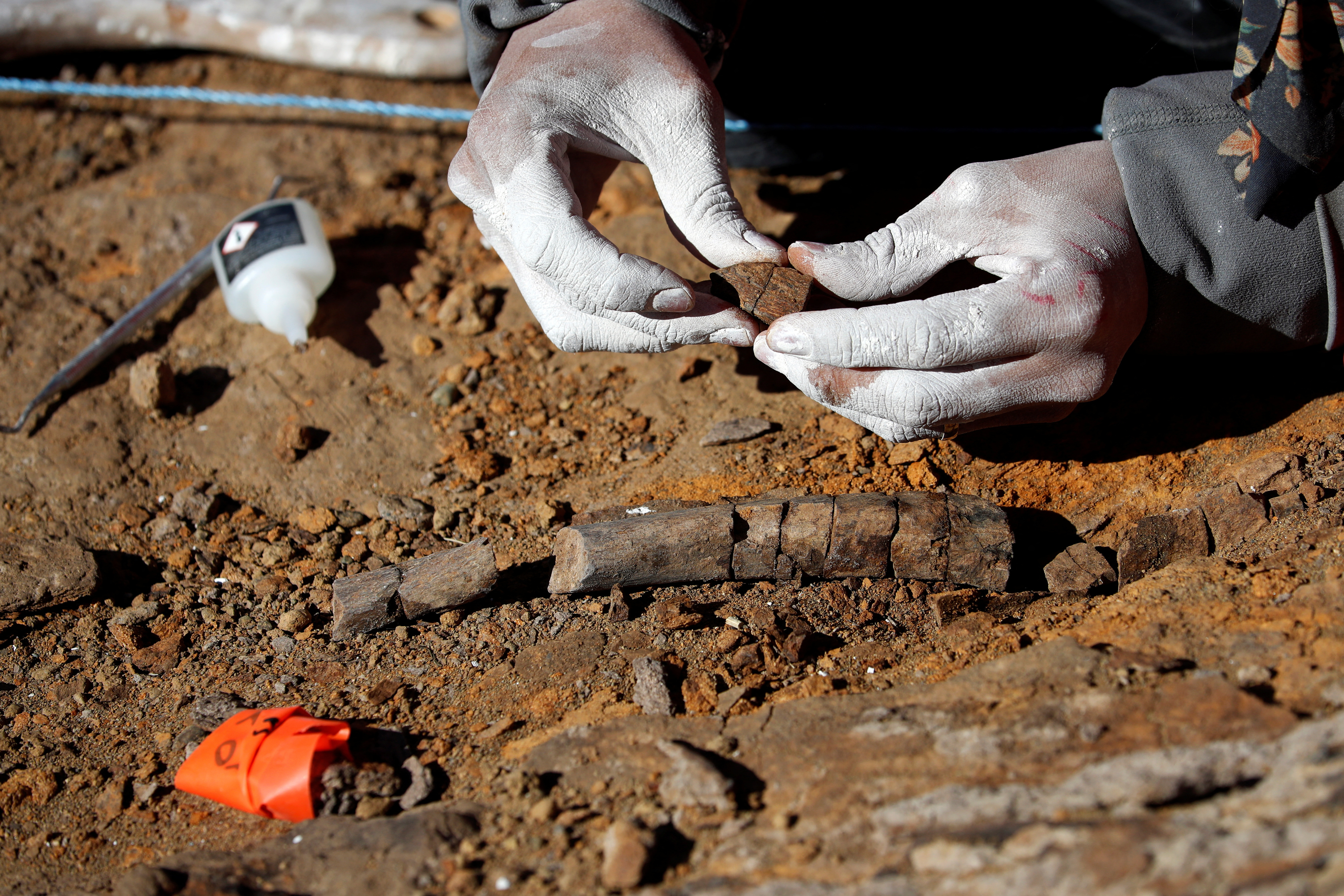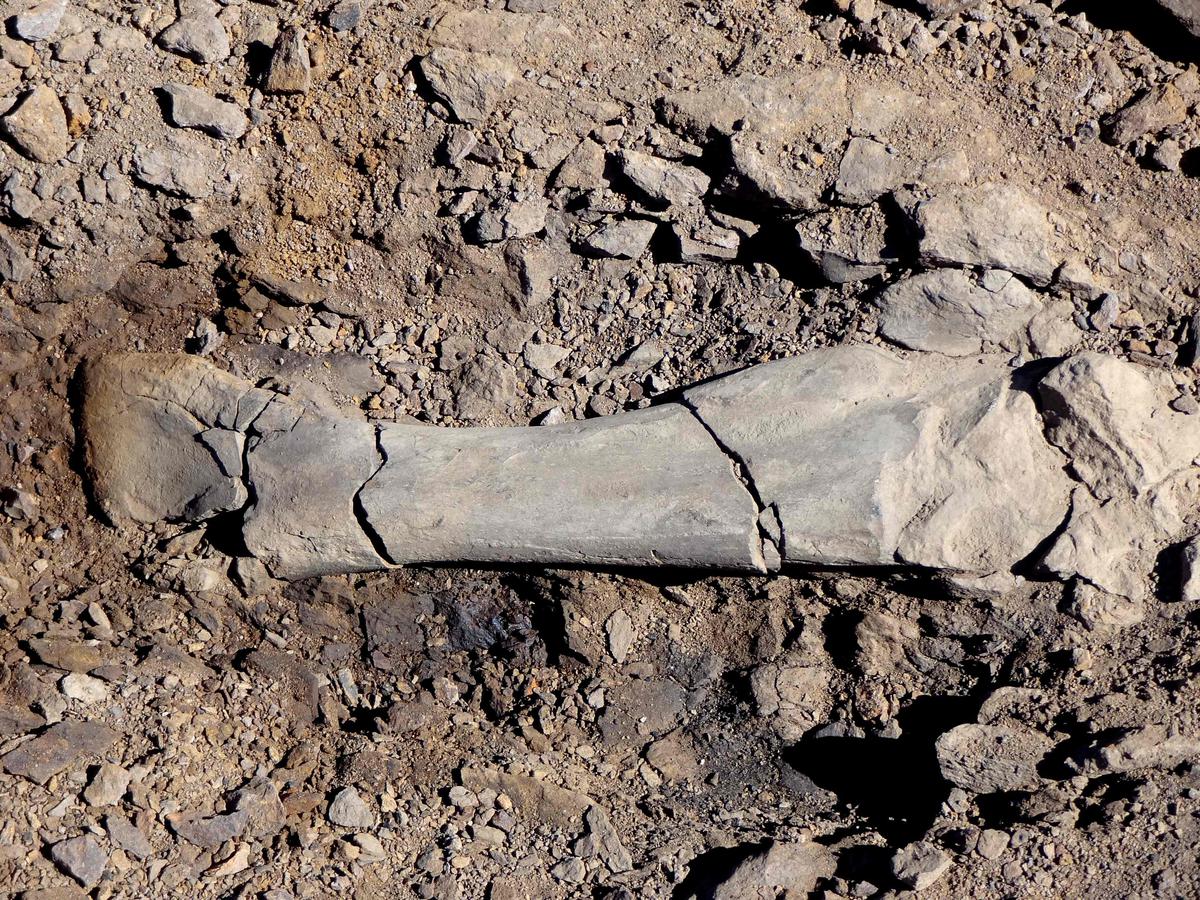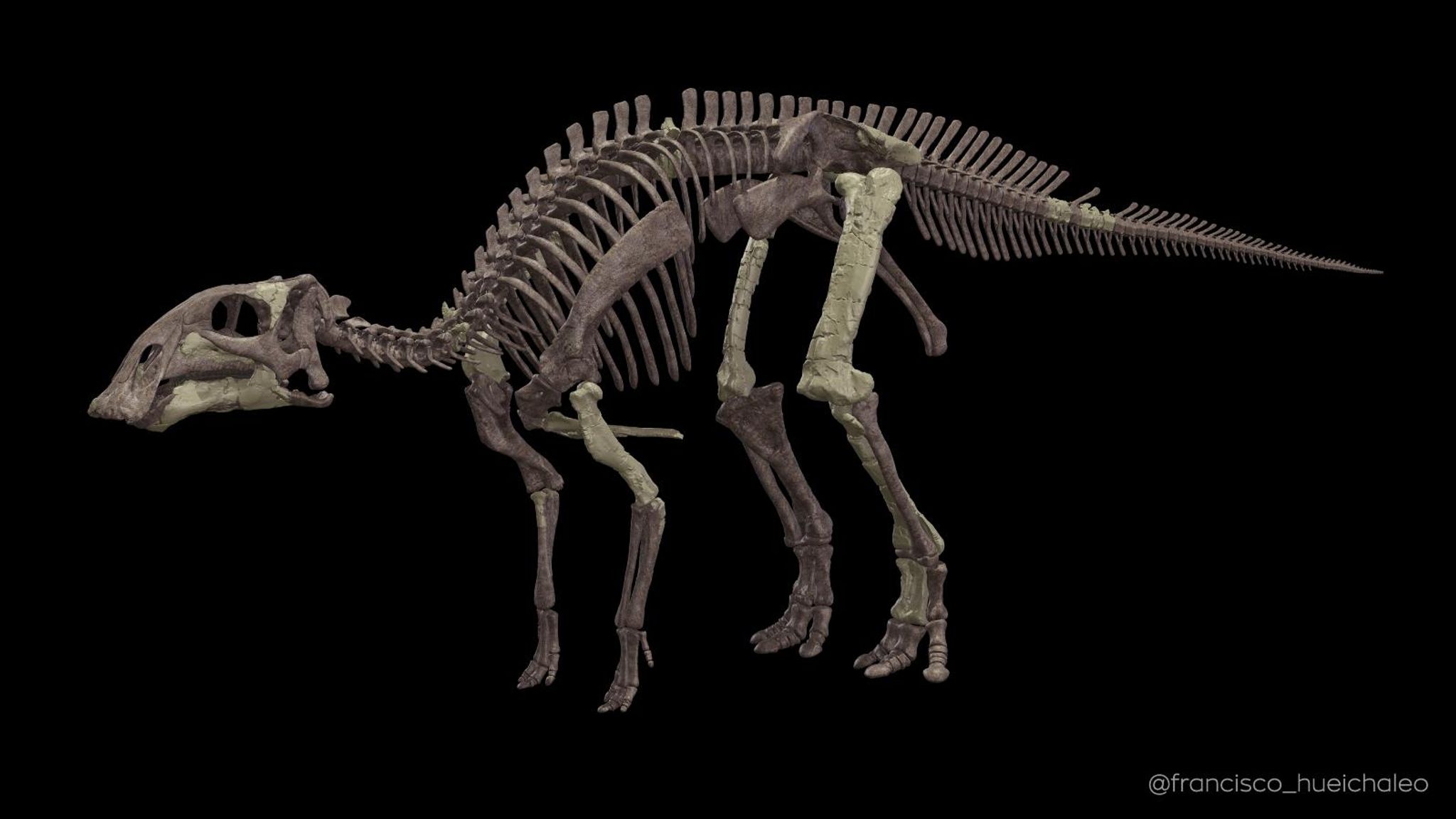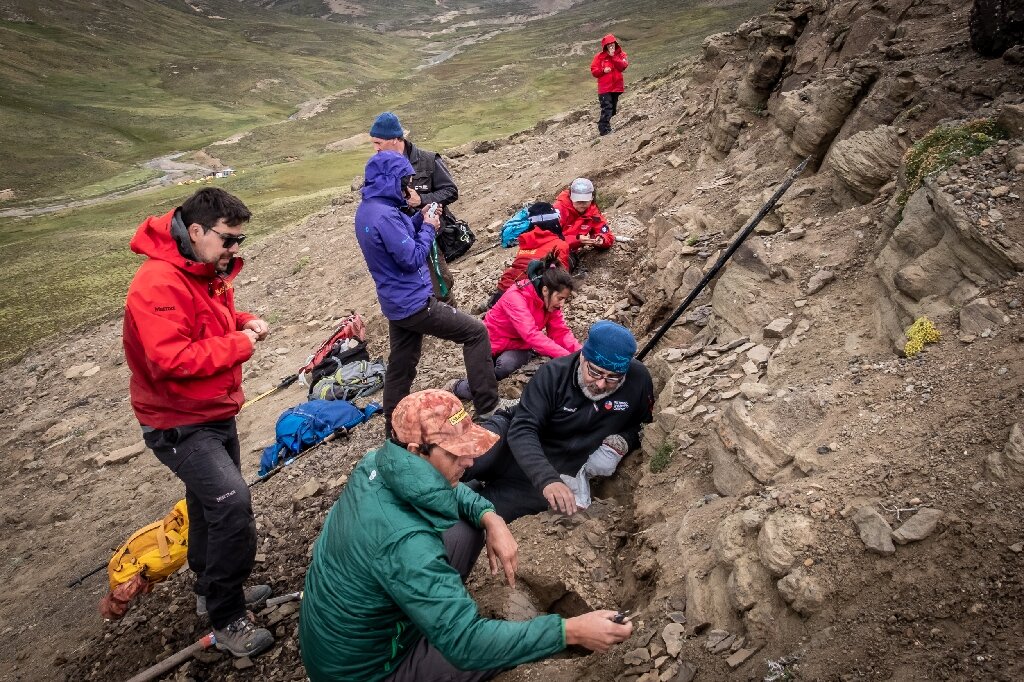Gonkoken nanoi is the first non-hadrosaurid duck-billed dinosaur known from the southern supercontinent of Gondwana.

Gonkoken nanoi. Image credit: Gabriel Diaz Yantén (Paleogdy).
Gonkoken nanoi lived in what is now Chile during the Late Cretaceous epoch, some 71 million years ago.
This dinosaur was between 3.5 and 4 m (11.5-13 feet) in length and weighed up to 1,000 kg.

The animal belongs to Hadrosauroidea, a superfamily of dinosaurs that includes ‘true’ duck-billed dinosaurs (family Hadrosauridae) and all dinosaurs more closely related to them than to Iguanodon.
“Duck-billed dinosaurs are among the most successful herbivores in the history of life on Earth,” said Universidad de Chile paleontologists Jhonatan Alarcón-Muñoz, Alexander Vargas, and their colleagues.

“Their tooth batteries with hundreds of teeth are arguably the most complex in vertebrate evolution and were capable of crushing, grinding, and shearing, allowing them to exploit a broad range of plant resources that they could further reach at both short and high distances above ground.”

“The duck-billed dinosaurs attained their maximum historical diversity in the dusk of the dinosaur age, upon radiation of the advanced forms of Hadrosauridae during the Campanian and Maastrichtian ages of the Cretaceous period.”

“Hadrosaurids became so successful that they are thought to have outcompeted other herbivores, in relation to evidence for declines of dinosaur diversity in North America and China.”
“In addition, during the Campanian-Maastrichtian, hadrosaurids were perhaps the only dinosaurs from the supercontinent Laurasia to have successfully colonized Gondwanan continents.”

Gonkoken nanoi, skeletal anatomy. Image credit: Alarcón-Muñoz et al., doi: 10.1126/sciadv.adg2456.
The fossilized bones of Gonkoken nanoi were recovered from the Lower Maastrichtian Dorotea Formation in Magallanes region, Chile.
“Gonkoken nanoi is the first non-hadrosaurid duck-billed dinosaur ever found in Gondwana, so its presence so far south poses a challenging biogeographic enigma,” the paleontologists said.

“Any explanation implies remarkably long routes, large gaps in between with no records of non-hadrosaurid duckbills, and marine barriers that stopped most Laurasian dinosaurs.”
“Most likely, these marine barriers could have been breached through chains of islands rather than continuous land bridges, such that any dispersal of terrestrial animals must have involved swimming or rafting on debris.”

According to the team, Gonkoken nanoi shares some derived traits with true duckbills, while several other characters retain the ancestral condition for Hadrosauroidea.
“Gonkoken nanoi likely descended from North American non-hadrosaurids that are transitional to Hadrosauridae,” the authors said.
“Given that this dinosaur is found so far south and that hadrosaurid remains cannot be confirmed from Subantarctic and Antarctic regions, this pattern suggests the ancestors of Gonkoken nanoi arrived earlier into South America than the hadrosaurids, giving the former a head start in reaching more Austral regions.”

“Hadrosaurids in turn may have not had enough time to reach this far south before the end-Cretaceous mass extinction.”
A paper describing this discovery was published June 16 in the journal Science Advances.